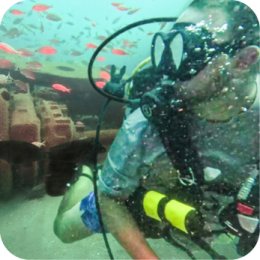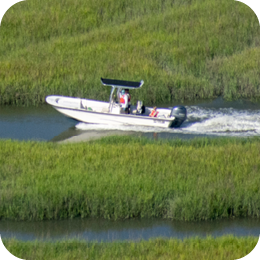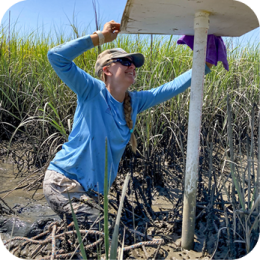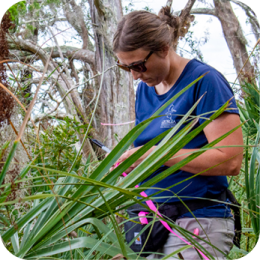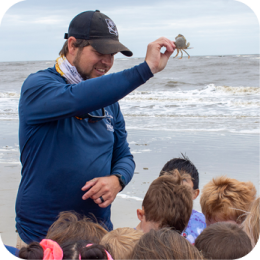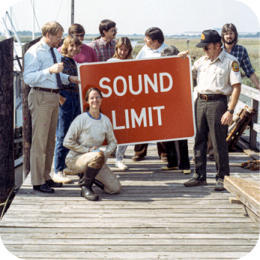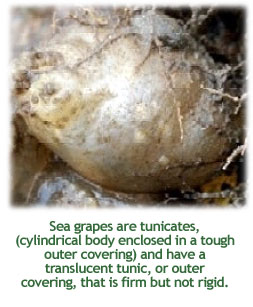
Scientific Name
Molgula manhattensis
Common Names
Sea grape, sea squirt
Average Size
3 cm. in length
Habitat
The sea grape is a common constituent of the thriving communities found growing on floating docks, piers and boat bottoms throughout the creeks and rivers of coastal Georgia.
Range & Description
You’ve probably seen them. Nestled among mats of seaweed-looking animals like bryozoans and hydroids, these plump little creatures evoke an irresistible urge to poke at them and make them squirt. But be careful! If you poke them too hard the animal itself might explode and so will end your fun and its existence.
Sea grapes have some very interesting characteristics that make them unique residents of our coast. For example, sea grapes are classified as members of the phylum Chordata, which includes vertebrates like fish, deer and elephants. However, sea grapes don’t actually resemble us vertebrates except during the larval phase in which they possess early developmental stages of a backbone and spinal chord. The larval stages of the sea grape are found free-swimming in the water column but the adult stages are described as sessile (permanently attached). Other sessile organisms include oysters and barnacles. Once these animals choose a place to settle down, they have made a lifelong commitment. Another interesting characteristic of sea grapes is that they are what scientists term hermaphrodites. This means that each individual possesses, at some point of its life, both male and female reproductive structures.
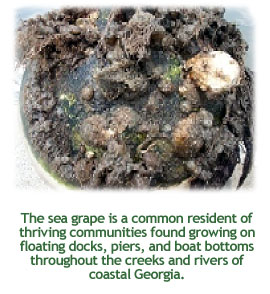 One of the most notable features of the sea grape is the two large siphons that are situated close together at the top of the animal. These siphons provide the sea grape with a continual supply of water that is full of food and oxygen. As the water is pumped through the animal, food is filtered from the water in the digestive system and waste products are flushed out. Food particles include microscopic plants, phytoplankton and microscopic animals, zooplankton. Sea grapes are tunicates, (cylindrical body enclosed in a tough outer covering)and have a translucent tunic that is firm but not rigid. Through the tunic you can see the major components of the digestive tract.
One of the most notable features of the sea grape is the two large siphons that are situated close together at the top of the animal. These siphons provide the sea grape with a continual supply of water that is full of food and oxygen. As the water is pumped through the animal, food is filtered from the water in the digestive system and waste products are flushed out. Food particles include microscopic plants, phytoplankton and microscopic animals, zooplankton. Sea grapes are tunicates, (cylindrical body enclosed in a tough outer covering)and have a translucent tunic that is firm but not rigid. Through the tunic you can see the major components of the digestive tract.
The next time you are on a floating dock take time to peer underneath and see the flourishing communities that are home to the sea grape.
Benefits
Sea grapes belong to what is called the "fouling community". Animals of the fouling community form dense mats on the underside of boats which increases drag, reduces maneuverability and can even lead to the deterioration of wood, metal or fiberglass. The typical fouling community provides excellent habitat for various crabs, shrimp and small fish as well as good feeding grounds for larger fish like the sheepshead.
Sea Grape thumbnail image courtesy of Melissa Frey
GO BACK A PAGE
RETURN TO HOME


